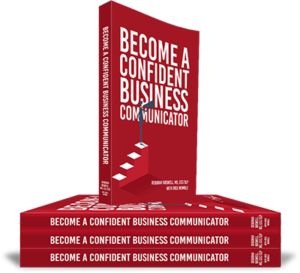In an increasingly Tweeted world, where 140 characters is all you get, getting to the point is more important than ever.
On the Wharton School’s website, an alumnus named Stacy Blackman says many business school applicants will write a 1,000-word essay when a 500-word limit was stated for the application. This represents a wrong-headed tendency toward a “more is better” approach to communication.
Ms. Blackman gave readers the following ideas for shortening written communications, so I thought: Why can’t we put them to use while preparing verbal presentations?
- Lead with your main point: If you were forced to boil down your speech to one or two sentences, what would they convey? Always start by writing your main point. Then elaborate as necessary.
- Cut the jargon:You and your colleagues might talk to each other in a code that seems descriptive, but using jargon in your speeches, even to those in your industry, can be confusing and pretentious.
- Use short, direct sentences:You’ll likely remember this rule from elementary school: Put the subject at the beginning of your sentence. So instead of, “A new meeting date was set by the steering committee,” say, “The steering committee set a new meeting date.” Also, watch out for sentences that go on for three or more lines. Shorter sentences are much easier to understand.
- Read it aloud:When you’re getting ready to deliver an oral presentation, you’ll catch mistakes and other problems more easily if you practice it aloud. If something trips you up or doesn’t make sense as you’re reading, rewrite until it’s clear.
In your next presentation, get in, make your point, make your case and get out. Your audience will love you for keeping it brief.


